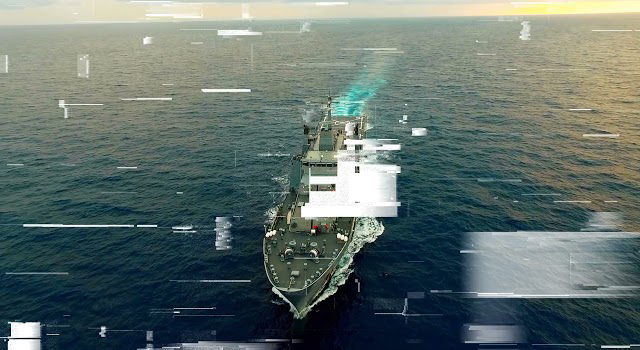Q&A
Obtaining a single version of the truth in disconnected ops: IFS Q&A
Military operations need to know the status of people and equipment at all times, and that includes during periods of planned or unplanned disconnected operations. Berenice Healey asks IFS’s Matt Medley why supporting disconnected operations is important and how to obtain a single version of the truth.
A recent IFS survey found that over two-thirds of military industry respondents agreed that the ability to operate in a disconnected, intermittent, and limited bandwidth operational environment is essential to military operations.
Connectivity has transformed the way warfare is carried out. But when that connection drops, how can operations continue seamlessly, and how can commanders ensure all participants are using the latest situational awareness data?
IFS industry director, defence manufacturing Matt Medley was a military pilot before going into manufacturing and has seen both sides of the coin. He offers his insight into the importance of supporting disconnected ops to ensure warfighters and commanders have the most accurate situational awareness whatever the connectivity status.
Berenice Healey:
Why is the ability to carry out disconnected operations increasingly important to defence operations?
Matt Medley:
One of the main drivers of situational awareness is data-driven decision making. We know that anytime there's a connectivity interruption, especially unplanned, that puts a lot of pressure on the digital backbone.
When a commander is planning the mission, she needs to have that full situational awareness, that totally accurate representation of not just the equipment, but all the forces and all the capabilities. Any kind of failure of that digital backbone can compromise the mission success, which can mean putting your assets and your forces in harm's way in a way that you were not anticipating.
There are planned and unplanned disconnections. Planned downtime is something you know about in advance and you can work your schedule around it; this could be for preventive maintenance, physical hardening – maybe you need to build a shelter around some of your facilities – or critical upgrades, things like that.
Unplanned disconnections are when things in the military can really go bad. That could be from a simple power outage up to a direct attack from the enemy. That gives you two problems; not just the fact that you're disconnected, but also the fact that something bad happened. You may have damage that you have to inspect and repair, you may have lost critical assets or, heaven forbid, you may have lost personnel. And I've seen that in real life.
Those different levels of disconnectivity and whether they were planned or unplanned make a huge impact on the ability to carry out military operations. The ability to be disconnected and keep flying missions while the support people are bringing the network back up is critically important to a military commander in the field.

// DSEI space advisor Dr Michael Holden
// MORFIUS is a high-powered microwave-based interceptor. Credit: Lockheed Martin
What does “a single version of the truth” mean and why is that important to military operations?
A key requirement in both planned and unplanned disconnections is the ability to aggregate, update and resync distributed data from multiple different sources out in the field back to what we call a main operating base, or in network terms a main node.
But you're usually not the only one who's disconnected, so updating with the most real-time data and re-syncing it back to the main authority is a huge deal. And you have to do that as quickly as possible.
If we print something off on our printer, it's no longer connected to the main data source and it's no longer considered true because the source data can change. You have broken your digital read and now you have a physical air gap between the data on the piece of paper and the main data.
As soon as you become disconnected from your main node you lose the ability to check for data updates. That's from both sides; the main operating base sending updates and collecting data so that the battlefield commanders know the status of their forces and mission.
One of the key requirements for a disconnected operations technology is the ability to very quickly – if not almost instantaneously – aggregate, update and resync all that data that gives commanders the situational awareness they need to know where their forces and everything is. But it also gives the people out in the field the comfort of knowing they're connected back to the main source and they now have the most updated data.
There are estimates that we've got something like four to five times the level of private investment in space capabilities than we do in government, which is a huge turnaround from a decade ago.
How can uncrewed and optionally crewed air, ground and sea assets best operate when they're disconnected?
Uncrewed or minimally crewed assets need to be able to operate autonomously. Things like Predator drones are often pre-programmed, so if they lose connectivity at some point they'll follow a predefined flight path and return to base.
Uncrewed assets can form a constellation, so even if you lose connectivity straight back to your main base, if you have line of sight connectivity to another asset you may be able to connect to one of your buddy assets out in the field. But that also generates more challenges for the single version of the truth.
Say a drone has lost connectivity to the main base, but there's a higher-flying intelligence asset that you connect to and then back to the main base. Now you have three versions of the truth; the one on the drone, the one on the intermediate asset and the one back to the main base. So it's a plus and a minus.
What architectures support disconnected operations?
We believe the underlying software infrastructure requires that ability to aggregate, consolidate and update while also providing physical and software-based hardening, baking the lack of security vulnerabilities into your systems.
That can be making sure that if you have classified information that it is operating on a certified system. That could be Cloud – we run on Azure – it could be private Cloud; it could even be completely on premises.
However, incremental reconsolidation is the most effective way to facilitate two-way information exchanges between a main base and a forward base, whether it's every five seconds, five minutes or five hours. Getting that reconsolidation, establishing that new version of the truth based on all the real-time data collected, then disseminating that real-time version of the truth.
On the technical side, once an asset does return to connected status, the supporting software must be able to immediately resync the information both ways. And there are three main things that we look at when we're establishing this; the ability to scale, the ability to maintain security when you do that, and then the user experience itself.
At the other end of the disconnected spectrum to operations is the environment. Airfields are very large and may have Wi-Fi dead zones and we offer a piece of software called Forward/Line Maintenance. If an entire network or connection or one user goes down, we have the ability with our Forward/Line Maintenance solution to have that person continue to work offline with the work instructions that they need at their fingertips, and then reconsolidate as soon as they get back into a Wi-Fi zone.
This all ties back to IFS Cloud, our flagship product that launched back in March last year. It's a one platform, fully containerised, fully scalable, one data model with all kinds of innovation embedded into an AI machine learning that offers complete functional parity.
// Main image: Matt Medley says maintaining a single version of the truth is crucial during military operations. Credit: IFS
